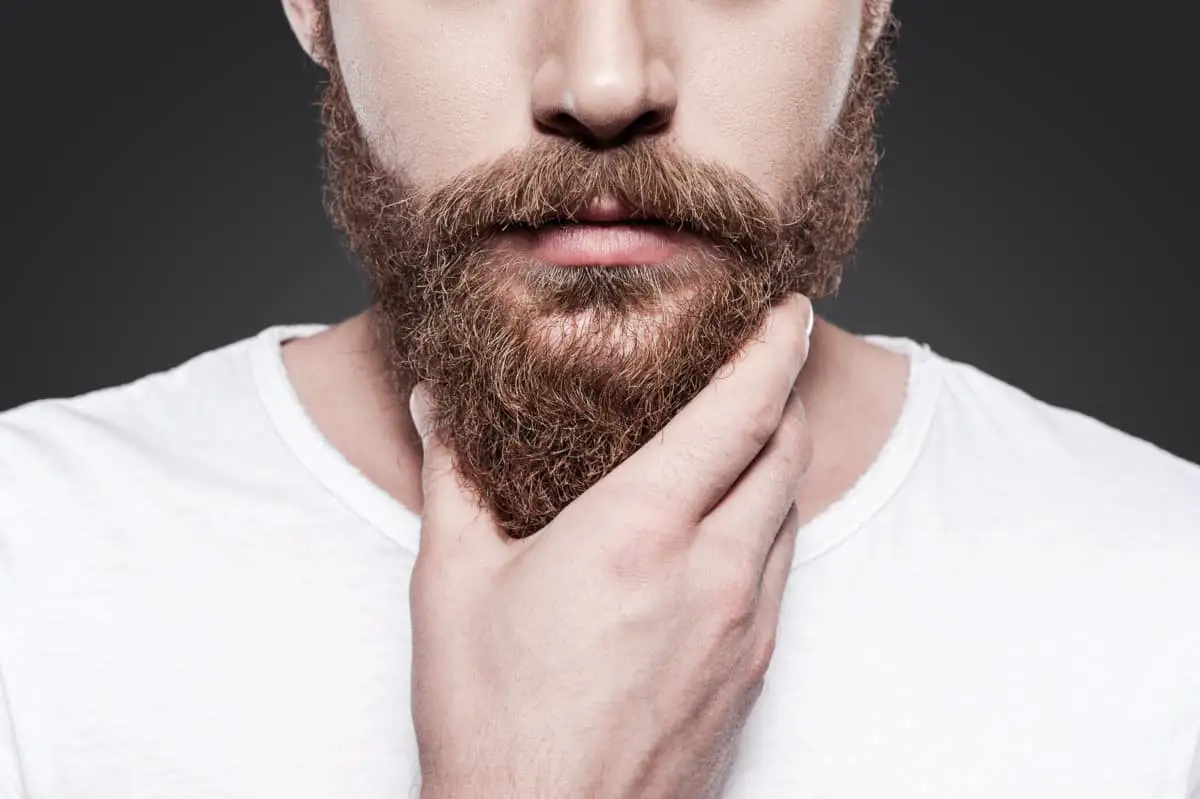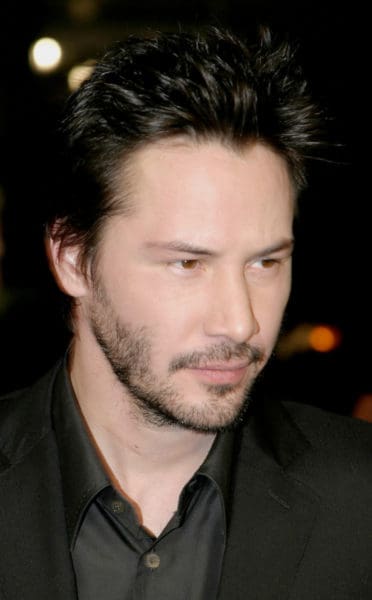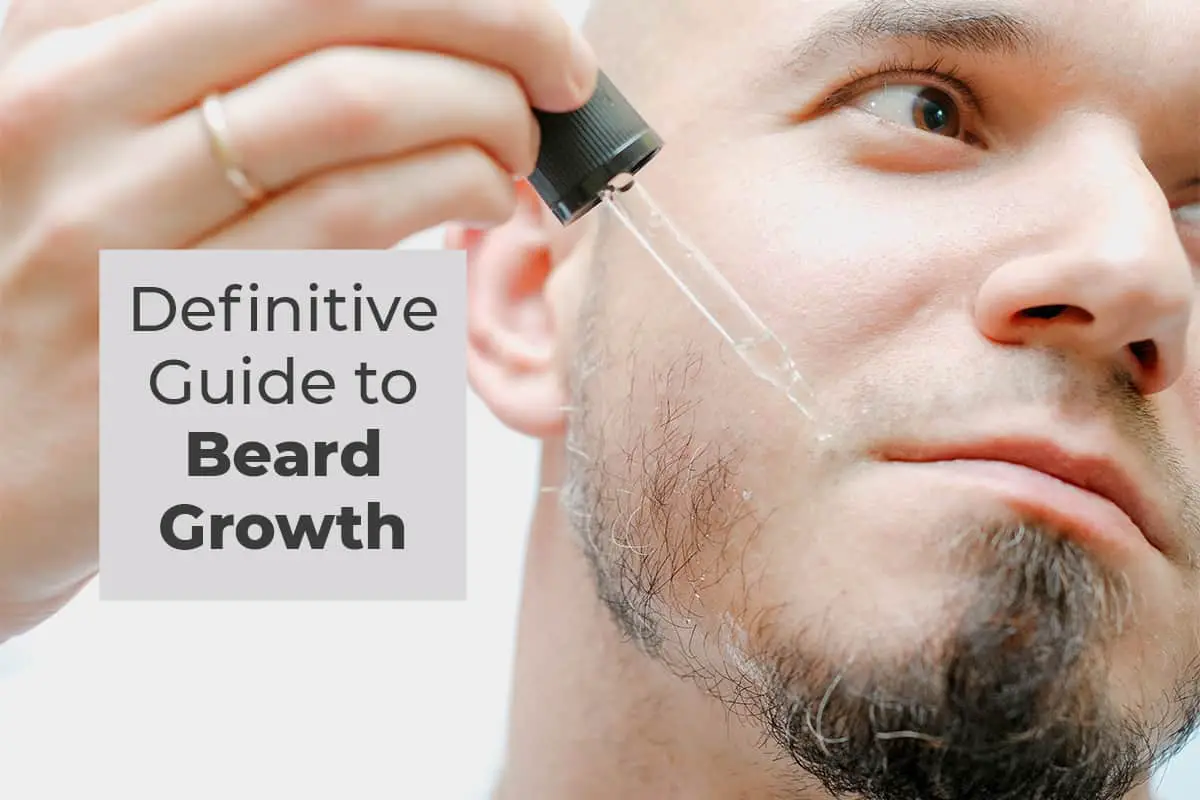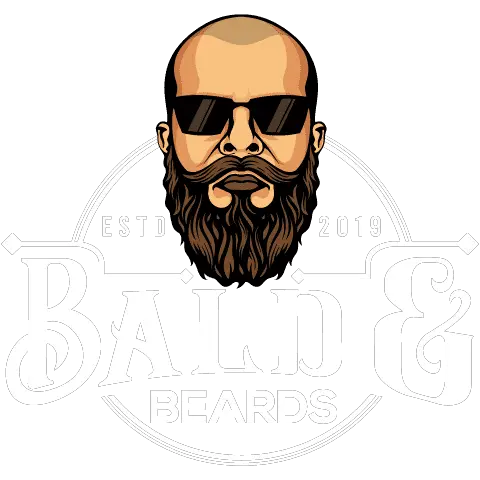As part of their grooming regimen, men have used many products to stimulate hair growth around their chins, cheeks, and jawlines. If you have a slow-growing, patchy beard, there are several methods and products available to speed up facial hair growth.
Beard growth in men rapidly picks up after puberty, but your beard growth stages will change throughout your life. Whether you’re just growing a beard or want tips on filling in a patchy beard, this guide provides all the information and tips you need to get a fuller beard.
Beard Growth for Men
Beard growth may seem easy for some men, but it actually takes years to learn how to grow a beard.
One thing that teenage men deal with early on is slow growth before, during, and after puberty. Studies show that facial hair doesn’t grow faster until most men are around the age of 25 to 28.
In this guide, I seek to share information on what causes slow beard growth and tips to grow out your beard hair faster, as well as thicken and add density to patchy beards.
Natural Beard Growth
For a man, growing a beard is a rite of passage and comes with age. However, growing a thick beard comes with knowledge.
Although No Shave November on Instagram boasts full bearded men shaving it all off for the cause, growing a beard is not easy for all men.
Many men need extra growing help and employ growth products like medication, serums and supplements.

Whether you’re looking for fuller, softer hair or just want to grow your beard longer, here are some of the best tips for growing out your beard to its potential.
- Find a beard style that flatters your face shape
- Determine the right length for your beard
- Understand that beards grow in stages and may not happen overnight
- Take charge of your beard growth by shaving around the perimeter and shaping your beard to enhance your appearance
- Use a high-quality electric beard trimmer with multiple attachments for shaving, fading your beard, edging, and lining
- Get the best products for beard growth for a fuller, thick beard
- Apply beard oil or beard growth serum daily and brush through with a beard brush or comb
- Try a conditioning beard wash to eliminate beard itch and clean underneath your beard
How Long Does It Take to Grow a Beard?
Every guy has wondered how long does it take to grow a beard? Facial hair grows between ¼ to ½ an inch per month. However, this is just an average.
Beard growth rates depend on several factors, such as genetics. I include more details on this below.
Some studies show that ethnicity and race play a factor in faster beard growth as well. One study from 2016 also analyzed Chinese men who generally grow facial hair slowly or not at all.
Stages of Beard Growth
While you may have just trimmed your beard or you’re waiting for your beard to grow in, beard growth stages remain the same. There are several stages of beard growth, but there are always three definitive beard growth periods.
Tip: Read the guide to beard growth stages to learn more and get tips to speed up your growth.
These three beard growth stages include:
- Anagen Phase: First cycle of growing new hair. New cell growth increases at a rapid rate at the hair follicle. Growth cycle may last between 2 and 6 years.
- Catagen Phase: This short phase is a transitional period where facial hair stops growing and the hair strand separates from the follicle.
- Telogen Phase: Incoming hair pushes the previous strand out and causes shedding, thus entering back into the anagen phase.
The anagen phase is the longer and works differently for everyone depending on hair growth factors. If your genetics include faster hair growth, you’ll likely be able to grow a thicker beard when you’re younger. However, other men don’t experience thicker beard growth until their 30s or 40s.
What Causes Beard Growth?
Read more here: Why Can’t I Grow a Beard
Hair Genetics
Genetics is the biggest factor in determining how and why your beard grows how it does. For most men, the men on their mother’s side reveal how your beard will grow in as you age. If your mom’s father had a thick, full beard, it’s likely that you will have those genes, too.
Did you know that Ancestry.com has a facial hair thickness trait in its DNA test? Studies show that facial hair grows faster for some because of their ethnicity, as well as age.
Scientists have linked this to a marker in the LNX1 gene on chromosome 4. Some variations always have thicker facial hair, depending on where the subject is from.
Age and Puberty
Another enormous factor in determining beard growth is your age. Puberty is a definite marker for the teenage beard, but after you go through puberty, you don’t instantly grow a wild beard garden. It gradually builds up through your 20s and 30s, leading to thicker, fuller growth when you’re older (and wiser).

While puberty kicks off beard growth, testosterone and skin health also play a huge factor in growing a beard.
Some men swear that exfoliation and beard growth oils can bring on rapid beard growth as your hair starts to thicken along your chin and mustache area. These are the two most common areas for initial beard growth.
Loosing Beard Hair
If you’re having other issues with losing beard hair, such as a patchy beard that never fills in, or beard itch that leads to shedding, you may have an underlying health issue that’s irritating your skin and hair follicles.
In fact, studies show that dandruff and dry skin lead to thinning hair.
Underlying Skin Problems
You may also have a condition known as alopecia barbae if you notice small to large, round bald patches under your cheeks, jawline, and neck. This condition may require lifestyle changes or a visit to your dermatologist.
Seborrheic dermatitis is another skin condition that irritates the skin underneath your beard, causing itching, beard acne, beard dandruff, and hair loss.
The best thing to do is to look at products that moisturize your skin underneath your beard and strengthen your hair follicles. Look at products to speed hair growth below.
Sebum Production
The overproduction of sebum can cause a lot of problems for your beard. If you have naturally oily skin, you’re likely producing too much sebum, which can lead to hair loss over time because of clogged pores. Exfoliation and a beard balm work to cleanse your beard and reduce the amount of sebum absorbing into your skin.
Hormones and DHT
While this goes back to age and puberty, testosterone is a major factor in facial hair growth. Studies have linked above average levels of testosterone back to thick beard growth, but the presence of the sex hormone dihydrotestosterone (DHT) can cause serious problems for your hair follicles.
In men who suffer from alopecia barbae, for example, facial hair will grow in patches, typically caused by DHT attaching to hair follicles and slowly killing them. As the hair dies, you’ll notice the hairs growing wispier and fainter before completing falling out and never growing back.
There are several beard growth oils that work to prevent DHT from taking hold and even regrow hair in areas that appear bald.
Poor Diet
Other studies have found that diets for hair growth are beneficial if internal chemistry is the problem. If you’re not getting a diet rich in vitamins and minerals, then your body may be dealing with deficiencies or inflammation. Scientists recommend that you get a diet rich in leafy greens, eggs, and protein to keep your hair healthy.
Stress
Have you been regularly having panic attacks or just feeling on alert about everything? Your cortisol levels are likely higher than normal, which can cause slow hair growth. Stress is a huge factor in shedding and hair loss.
In some cases, men actually pluck out beard hair due to beard trichotillamania. Some simple changes to your lifestyle, breathing techniques, and recognizing triggers can make a huge difference in beard growth.
Smoking
While it’s not entirely proven that nicotine stops hair growth, men on Reddit and in other areas of the internet have wondered whether smoking stops hair growth. One study has shown that smoking and tobacco use can slow down beard growth stages, and long-term exposure of smoke to the hair follicles may cause stress and irritation.
Lack of Sleep
It’s most likely that your beard isn’t falling out due to lack of sleep – after all, the five o’clock shadow is proof that you probably didn’t get a good night’s rest. However, insomnia may exacerbate alopecia barbae and other conditions leading to patchy, irritated beards
While research is still ongoing into insomnia and affects on hair, one study showed there’s a link between sleep and hair loss. Results show that decreased sleep leads to more stress and higher cortisol levels. If you’re getting enough sleep, your stress levels go down significantly.
However, if you’re not able to sleep, tension from stress builds and may lead to anxiety, causing beard itching and tugging, and decreased blood circulation.
If other health issues like sleep apnea and back pain also keep you up at night, you likely have little time to rest and “turn off” for the night. Resolving these health problems will drastically improve your sleep, so make it your top priority to solve these underlying causes before trying to speed up your beard growth.
Your CPAP mask could cause a restless night of sleep. Get yourself a beard friendly CPAP mask for the best in nighttime comfort.
How to Stimulate Beard Growth
The first step is to look at the risk factors above and see what lifestyle changes to make, if any. Then, it’s time to take a deeper look at how you’re treating your beard and the skin underneath. There may also be a few beard growth creams that can help, as mentioned below.
1. Start a Beard Care Routine
If you’re disappointed in beard growth, the first thing to do is check what you’re washing your beard with. If your beard is always and itchy, you could try a moisturizing beard wash or beard shampoo. These are formulated specially to be gentle on your skin while also cleaning dirt and oil out of your beard.
Here’s a typical beard care routine to follow.
2. Trim Your Beard
Even if your beard grows slowly, define a beard style that suits your face shape. Trimming around the perimeter of your beard and avoiding a neckbeard also direct your beard hair where to grow. A pair of mustache trimming scissors and vacuum beard trimmer are great tools to have for this purpose.
Does shaving increase hair growth? No, but it’s more motivating to fill in a beard style you like, especially if you want to create a full, long beard. It may take months to achieve this growth, but at least it will grow in perfectly as you shape the perimeter and mustache.
See more tips: Trimming to Help Beard Growth
3. Brush your Beard
It’s the extra step we tend not to do, just like adding on a beard oil. However, a great beard brush with boar bristles helps remove dead hair and smooth out coarse, wiry hair. If your beard is tangled or has a lot of split ends, brushing is the first step to see the true quality and density of your beard.
After brushing your beard, you can direct hair in the direction you want it to grow. This helps cover patches and helps connect your beard. Combs and beard oils also work to keep a healthy, detangled beard.
4. Use Beard Oil or Beard Balm
Beard oil is another essential component of healthy skin and beard growth. Since facial hair is a direct result of skin pore health, you’ll want to find a beard oil, beard balm, or beard butter that suits your skin type.
However, we don’t recommend applying beard wax if you’re trying to rejuvenate a slow-growing beard. High beeswax concentrations lead to more tangles if not washed out every day.
The best beard growth oils typically include ingredients like biotin, jojoba oil, coconut oil, saw palmetto oil, castor oil, and saw palmetto oil. However, beard oil may not have the kind of consistency you like. There are also beard growth serums that contain medicated ingredients (see below).
Beard balms are a bit tackier, conditioning your beard with shea butter and beeswax, as well as essential oils.
5. Take Products to Help Grow a Beard
Medicated beard growth products typically include minoxidil (the primary ingredient in Rogaine), which increase blood flow to wherever you apply the topical, whether it’s the hair on your head or areas of your face you want to grow healthy hair.
While minoxidil for beards is a great topical solution, if you haven’t had luck with natural ingredients like biotin, you should be aware of the side effects, such as burning, tingling, irritation, and dry skin.
It’s always best to check with your doctor about these products or to see a dermatologist who can better prescribe the right medicated solution if there’s an underlying skin condition, such as alopecia barbae or seborrheic dermatitis.
- Beard Growth Kits
- Beard Growth Serums
- Beard Growth Oil
- Minoxidil for Beard
- Biotin for Beard Growth
- Vitamins for Beard Growth
6. Eat a Balance Diet
It seems kind of obvious that simply eating better can help your beard to grow. But it’s true. There’s an array of beard growth foods know to stimulate facial hair growth. Foods like:
- Eggs
- Almonds
- Cauliflower
- etc
7. Get a Beard Transplant
Even with applying all the right beard growing practices, you still need more help. Though it’s thought to be a bit radical, you could opt for a beard transplant.
It’s similar to a hair transplant of the scalp, but performed in facial areas to fill in bare or thinning spots.
8. Use a Beard Roller
A beard derma roller is a micro needle device rolled across your face to stimulate new beard growth.
Beard Growth Facts
Beard Oil Always Works
Not necessarily. If the hair follicles have gone dormant or died in an area of your beard, you likely won’t see growth unless the issue is because of dry skin or beard itch. Beard oils help with hair health by healing damage and providing nourishment to weakened hair follicles, however.
Itchy Beard Hair is Normal for Growth
Actually, it means you have inflammation under the skin likely caused by dry skin. This typically pops up when you use a regular hair shampoo. Instead, gently clean with a beard wash and use a moisturizer to heal skin underneath.
Shaving Makes Your Facial Hair Grow
The truth is, hair doesn’t grow back any faster, although some hair may come in coarser. These new hair strands are simply thicker, but there aren’t any more of them than you had before shaving.
Dirty Beards Lead to Patchy Facial Hair
Clogged pores and skin irritation can cause beard itch, leading to weakened hair follicles, so this answer is partially true. You should try to wash your beard every day to avoid oil and dirt buildup. However, just because a beard is patchy doesn’t mean it’s a dirty beard.
Testosterone Increases Beard Growth
Testosterone is a huge factor in beard growth, but it can also cause problems depending on your genetics and the development of dihydrotestosterone, which may attach to hair follicles and kill them slowly.
If you do have low testosterone levels, your doctor may talk to you about the benefits of hormone treatments.
Thick Facial Hair is Inherited
The truth is genes play a huge role in hair loss and growth. Multiple studies show that healthy beard growth is hereditary. So if you can’t grow a beard, it may relate back to your ethnicity. If your ancestors had thick beards, it’s likely that you’ll have a thicker beard as well.
If you have a patchy beard, all hope isn’t lost. Facial hair grows in stages and may not grow in thicker until your late 30s and 40s. Most men who have long beards receive praise simply because it takes years to cultivate long, lustrous beards.
There are plenty of beard growth products that may rapidly increase your facial hair growth, but studies also show that healthy eating, vitamins, and exercise reduce hair loss.


